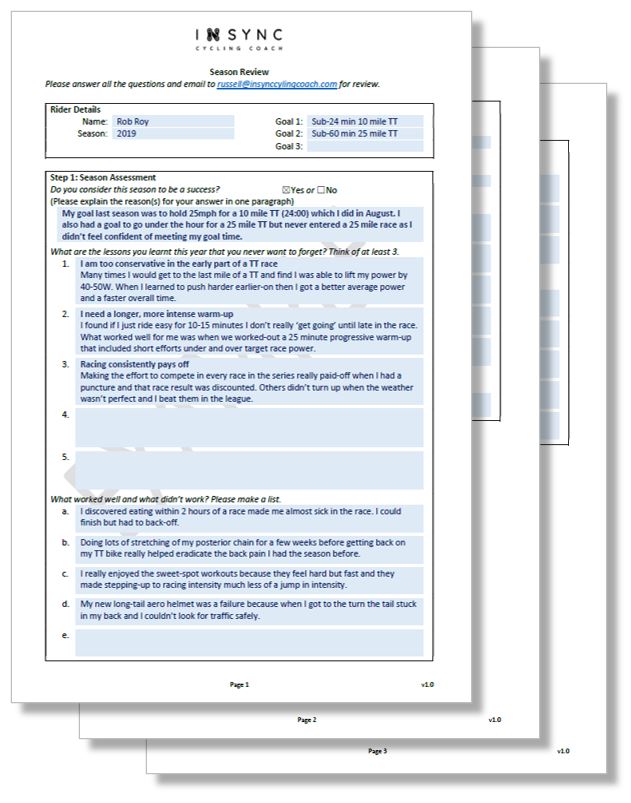How and why you should conduct an end-of-season review
What is it?
An end of season review is a document that records your thoughts and feelings about how successful this season’s training and competition was. It is a very simple concept, but a powerful one. By writing down the things that did and didn’t go well, we can start to build an objective view on what needs to change in your training.

Why should I make a review?
Firstly, a season review is great for motivation. In my experience I almost always find that the season was actually more successful that I initially thought. Such a boost to your confidence and motivation comes at the perfect time, as you finish one season and look ahead to hard pre-season training for the next.
Secondly, it is much easier to create strong, individual goals for the coming season if you have a good understanding of your previous season. That means not relying on just your memory or your impression of the preceding months but going back through factual data and picking-out what really happened. This is why it is important to keep a record of how events went in your training diary.
Unless you take the time to review past performances, it can be easy to overlook your achievements by subconsciously measuring them against today’s (higher) ability level.
For example: that 100-mile sportive that took you five and a half hours early in the season might be a distant memory. A disappointment even. But why? The reason is because you (now) know you can do it considerably faster. But if you think back, or better still read through your notes, you might find that at the time it represented a significant step forward. In fact, you were expecting it to take over six hours.
Why does that matter? It matters because it proves that you are capable of setting challenging goals and achieving them. Isn’t that what we are all chasing?
How do I do it?
Whilst I have a specific form I’ve developed over the years for my athletes, the important thing is to cover some basic areas of focus and follow a few guiding principles. If you do things in the correct order, then each section will inform the next.
1. Assess yourself against your goal(s) for last season
Maybe you didn’t write them down. Maybe they were just ‘ideas’ or ‘dreams’, but whatever they were, write them down now. Limit it to 3. Try not to fixate on the measurable data and write down to what extent you achieved them -it’s not always black and white!
Example Goal: Go under the hour for a 25-mile time trial.
Result: I didn’t go under the hour, I managed 1:03.23. I actually only managed two attempts, after one was cancelled and the other two were quite windy and I struggled to hold an aero position for the duration.
2. Conduct a general assessment
What did you learn? What went well? What didn’t go so well? The more the better.
Example Lesson 1: I am too conservative in the early part of a TT race.
Often, I would get to the last mile of a TT and find I was able to lift my power by 40-50W. When I learned to push harder earlier-on then I got a better average power and a faster overall time.
3. Conduct a simple Gap Analysis
This just means defining what separates the rider you are today from the rider you want to be in future. It consists of:
- Your current level: In one sentence, what level of rider do you consider yourself to be?
- Your next level: What level of rider do you want to be next season?
- Your limiters (the gaps): What separates you from your next level? (up to 5)
Example Current level: I am a mid-pack club Time Trialist.
Your next level: A competitive Time Trialist at club level.
Your gaps (limiters): a. I can’t match the time of the top-3 riders in the club time trial series. b. I don’t seem to have the strength endurance to hold 25mph for 1 hour.
4. Goals for next season
This should always be the last step. Don’t be tempted to jump straight into defining fresh goals without reviewing your existing ones.
Well-set goals require clarity and objectivity to determine useful evaluation and helpful monitoring. On the other hand, poorly-set goals can cause frustration and lack effectiveness.
It is important to differentiate your Outcome goals from your Process goals. Outcome goals are what they suggest: What is the thing (or things) you want to achieve? Eg Finish in the top 3 in a club TT. This should not be confused with a Process goal which is what you need to accomplish in training to achieve your Outcome. Eg Produce an extra 15Watts.
Try not to obsess over PMC chart ‘fitness’ values or Watts/kg, instead prioritise what outcome you want to achieve.
To make sure your goals are clear and reachable, each one should be SMART:
- Specific (simple, sensible, significant).
- Measurable (meaningful, motivating).
- Achievable (agreed, attainable).
- Relevant (reasonable, realistic and resourced, results-based).
- Time bound (time-based, time limited, time/cost limited, timely, time-sensitive).
So, for more effective goals for next season, we could modify our goals as follows:
Outcome goal: Finish in the top 3 in a club 10-mile TT next season.
Process goal: Increase FTP by 15W by the end of June.
Summary
So, there you have it, a basic template with which to create a great end-of-season review and a set of challenging but achievable goals for next season. Don’t forget to think about how you are going to track your progress against these goals as you work towards them. Then if you plan your training specifically to achieve the process goals on time then you are on the path to success. Good luck!
Want expert help with your end-of-season review? Try our Advanced Training Review and get detailed insights into your recent training and receive guidance on how to make next season your best ever.
